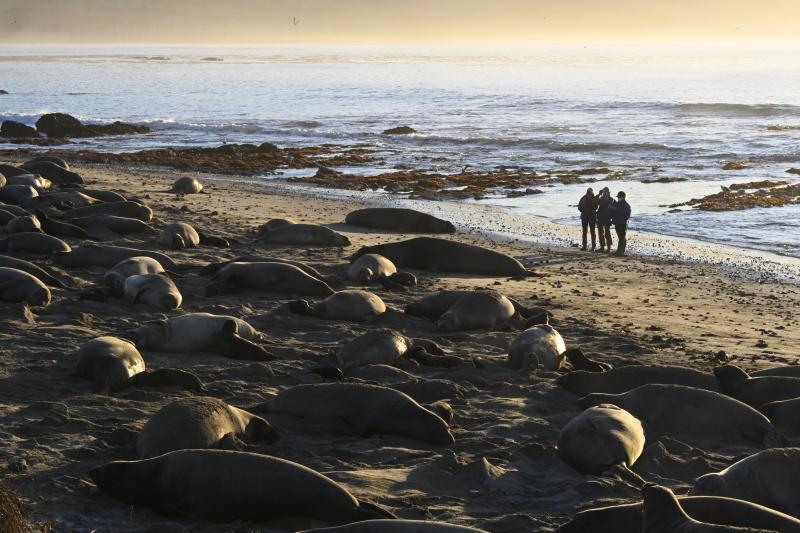
Some research takes a lifetime - Like the Northern Elephant Seal
by NOAA Fisheries 17 Mar 09:30 PDT

Researchers observing a colony of northern elephant seals © Photo taken under NOAA Fisheries MMPA Permit # 23188
Long-term research under Marine Mammal Protection Act scientific research permits provides insight into northern elephant seal moms and pups.
For more than 50 years, NOAA Fisheries has issued permits for research on marine mammals to improve our management and understanding of our ocean neighbors. The Marine Mammal Protection Act, authorizes NOAA Fisheries to issue special permits that allow research on marine mammals and improve our understanding of marine mammals in the United States. This research, authorized under the Marine Mammal Protection Act, helps us so we can manage these species more effectively.
Northern Elephant Seal Research in California
One group of seal biologists from the University of California Santa Cruz have held research permits for almost as long as NOAA Fisheries has been issuing them. Over five decades, these researchers have tracked thousands of northern elephant seals at Año Nuevo, a state park in California south of San Francisco. Northern elephant seals are extremely large brown seals known for the large-nosed males, who can grow up to 13 feet long and weigh 4,000 pounds.
Each year thousands of elephant seals return to Año Nuevo to give birth, raise pups, and breed. And each year, the scientists from UCSC study the seals to learn more about them and to better understand their behavior, physiology, and ecology. Over the past decades, researchers documented:
- Which females had pups
- How large those pups were when they weaned from their mothers
- Whether the pups were male or female
- If the female pups grew up and went on to raise pups of their own
Weighing and Tagging
Researchers keep track of seals using flipper tags. These plastic tags with unique identification numbers—like you might see on the ear of a cow—are attached to the back flippers of the seal. When the researchers observe a mom and pup pair, they record the seals' identities and link them in the database. This allows them to identify which pups belonged to which mothers, especially after the nursing period is over and the animals separate.
After the pups wean, at about a month old, researchers carefully capture the pups and weigh them. Elephant seal pups are heavy—270 pounds on average —so picking them up and stepping on a scale is not an option. The researchers use a tripod and scale to help lift the animal into what looks like a canvas bag to obtain an accurate weight. The weighing process lasts only a few minutes. The data can be used to ask important questions about how different seal moms vary in their ability to raise pups.
Learning from the Data
The researchers then observe the flipper-tagged animals throughout their entire lives. They use binoculars and cameras to identify individual animals and record data about where they go and what they do. This includes information about survival, reproductive success, as well as pup ID.
UCSC researchers analyzed the weaned pup weights for several generations of seals. They discovered that certain seal moms always produced heavier pups, even accounting for the age of the moms and whether the pups were male or female. When those heavy female pups grew up and had their own pups, those grand-pups went on to become the heavier pups raised that year. Of all the pups weighed during weaning, the heavy pups were also the most likely to return to Año Nuevo as breeding adults. They did not necessarily live longer or produce more pups than the pups that weighed less at weaning.
Benefits of Long-Term Research
Studying seals over time and looking at traits that may be passed from mothers to pups is only possible through continuous, long-term data collection. This research by marine mammal researchers is authorized by scientific research permits.
Research permits cover projects including capturing, sampling, tagging, and releasing seals to find out how deep they dive and what they eat. They also cover remote biopsy sampling and tagging large whales to study their migrations. As scientists conduct permitted research, they expand our knowledge of the abundance, distribution, and health of these animals.
Resource managers use that data to inform their decisions. Rigorous studies of these long-lived species often require years, even decades, of data collection.